Digital Camera World Verdict
Holding up the wide-angle end of Canon’s trinity f/2.8 zooms for DSLRs (or mirrorless EOS R-series cameras via a mount adapter), the third and latest edition of this lens represents an extensive revamp. Corner-sharpness is much improved, compared with previous editions, and build quality is up to Canon’s typically excellent L-series standards. Even so, the Mark III still struggles to hold its own against less expensive competition from Sigma and Tamron.
Pros
- +
L-series build quality
- +
Advanced coatings
- +
Fast and constant aperture
Cons
- -
Not the widest-angle in class
- -
No image stabilization
- -
Pretty pricey to buy
Why you can trust Digital Camera World
The third in its series, the Canon EF 16-35mm f/2.8L USM III joins the latest EF 24-70mm and EF 70-200mm f/2.8 zooms, as the wide-angle lens in the ‘trinity’ collection. As such, it’s not as ultra-wide as the EF 11-24mm f/4L USM zoom, but is an f/stop faster. The maximum viewing angle is slightly less than from the competing Sigma 14-24mm and Tamron 15-30mm f/2.8 zooms, equating to 108 degrees compared with 114 or 110 degrees. Even so, it delivers plenty of creative potential.
Specifications
Mount: Canon EF
Full frame: Yes
Autofocus: Yes
Image stabilization: No
Lens construction: 16 elements in 11 groups
Angle of view: 108-63 degrees
Diaphragm blades: 9
Minimum aperture: f/22
Minimum focusing distance: 0.28m
Maximum magnification ratio: 0.25x
Filter size: 82mm
Dimensions: 89x128mm
Weight: 790g
Key features
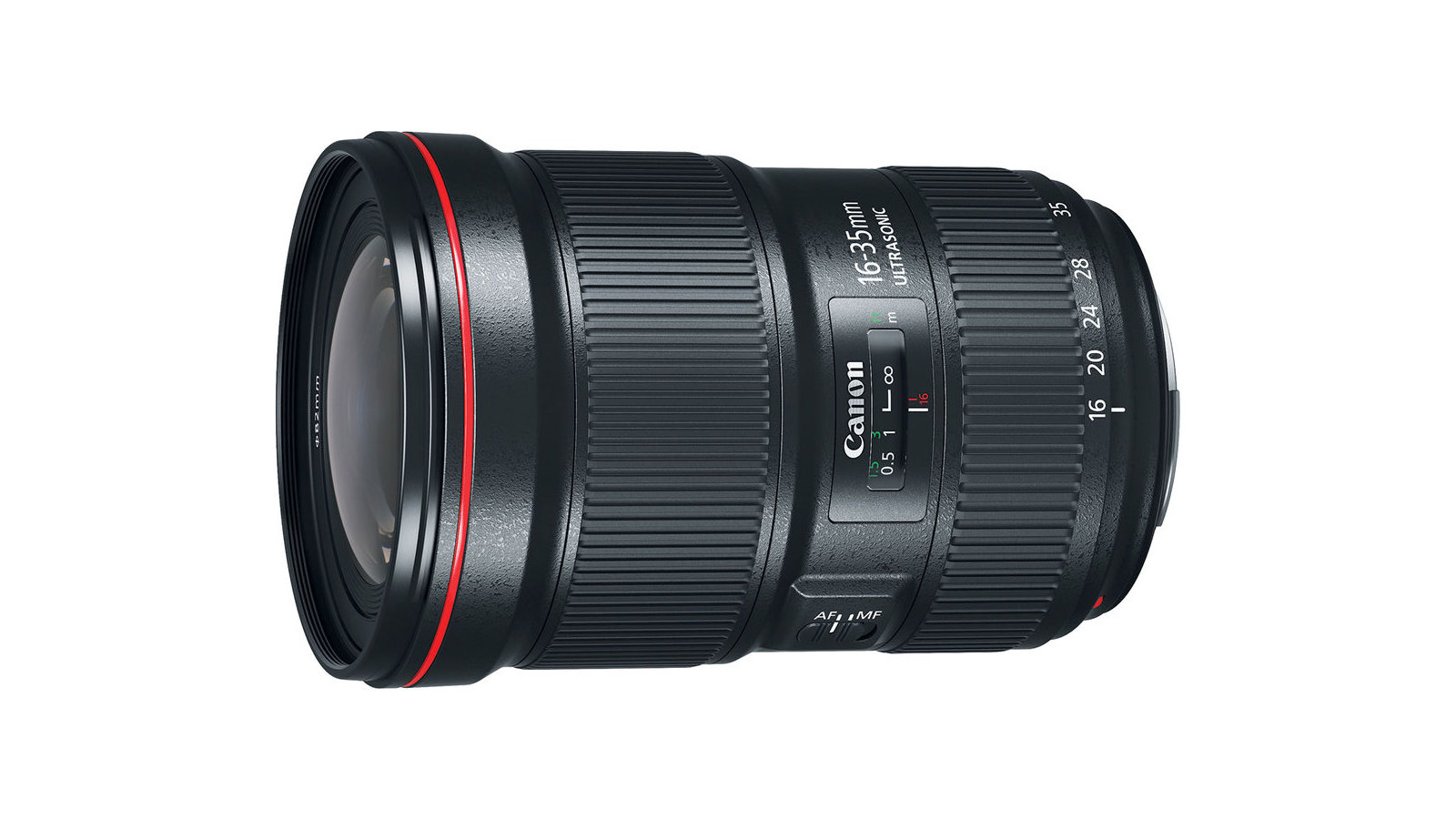
The Mk III is extensively redesigned compared with Canon’s previous edition. It gains a large and complex double-surface GMo (Glass Molded) aspherical element at the front, adding to two UD (Ultra-low Dispersion) elements and a ground aspherical element at the rear. Upgraded, high-tech coatings include both SWC (SubWavelength Coating) and ASC (Air Sphere Coating) for greater resistance to ghosting and flare. Weather-resistant attributes are extended to include moisture- and grease-repellent fluorine coatings on the front and rear elements.
The lens is physically quite long at 128mm, considering that it doesn’t have a built-in fixed hood, and the filter attachment thread is fairly large at 82mm. Robust build quality is up to Canon’s usual L-series standards. Ring-type ultrasonic autofocus is quick and quiet, and there’s a pleasantly smooth action to the zoom and focus rings.
Performance
Centre-sharpness and contrast are exceptional when shooting wide-open at f/2.8, throughout the entire zoom range. The Mk III also has much improved corner-sharpness compared with the previous edition, but still lags behind the competing Sigma 14-24mm Art lens in this respect. Control over color fringing is very good but, again, it’s not quite as impressive as in the Sigma 14-24mm, and lacks the competing Tamron 15-30mm zoom’s image stabilization.
Lab results
We run a range of lab tests under controlled conditions, using the Imatest Master testing suite. Photos of test charts are taken across the range of apertures and zooms (where available), then analyzed for sharpness, distortion and chromatic aberrations.
We use Imatest SFR (spatial frequency response) charts and analysis software to plot lens resolution at the center of the image frame, corners and mid-point distances, across the range of aperture settings and, with zoom lenses, at four different focal lengths. The tests also measure distortion and color fringing (chromatic aberration).
Sharpness:
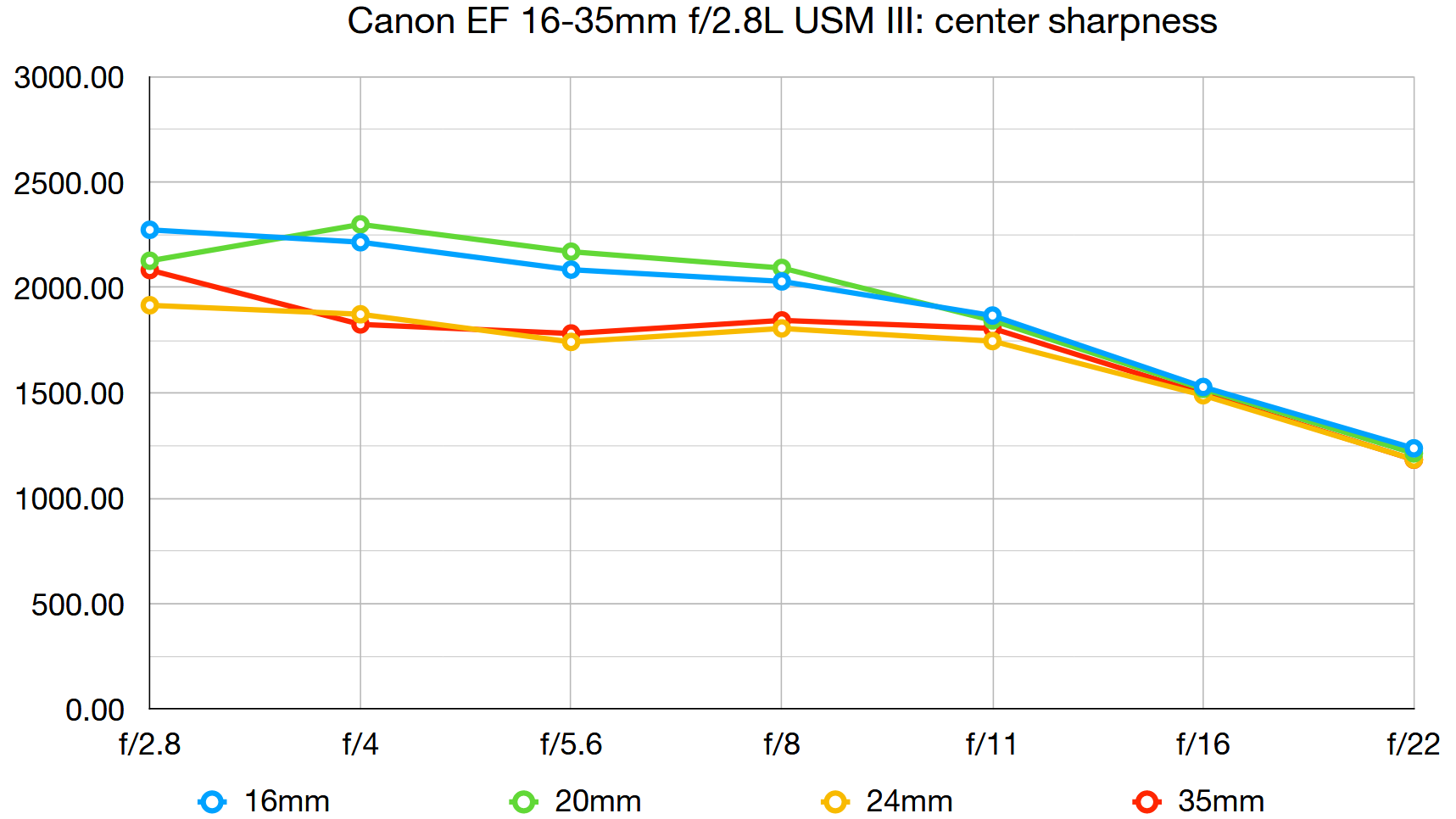
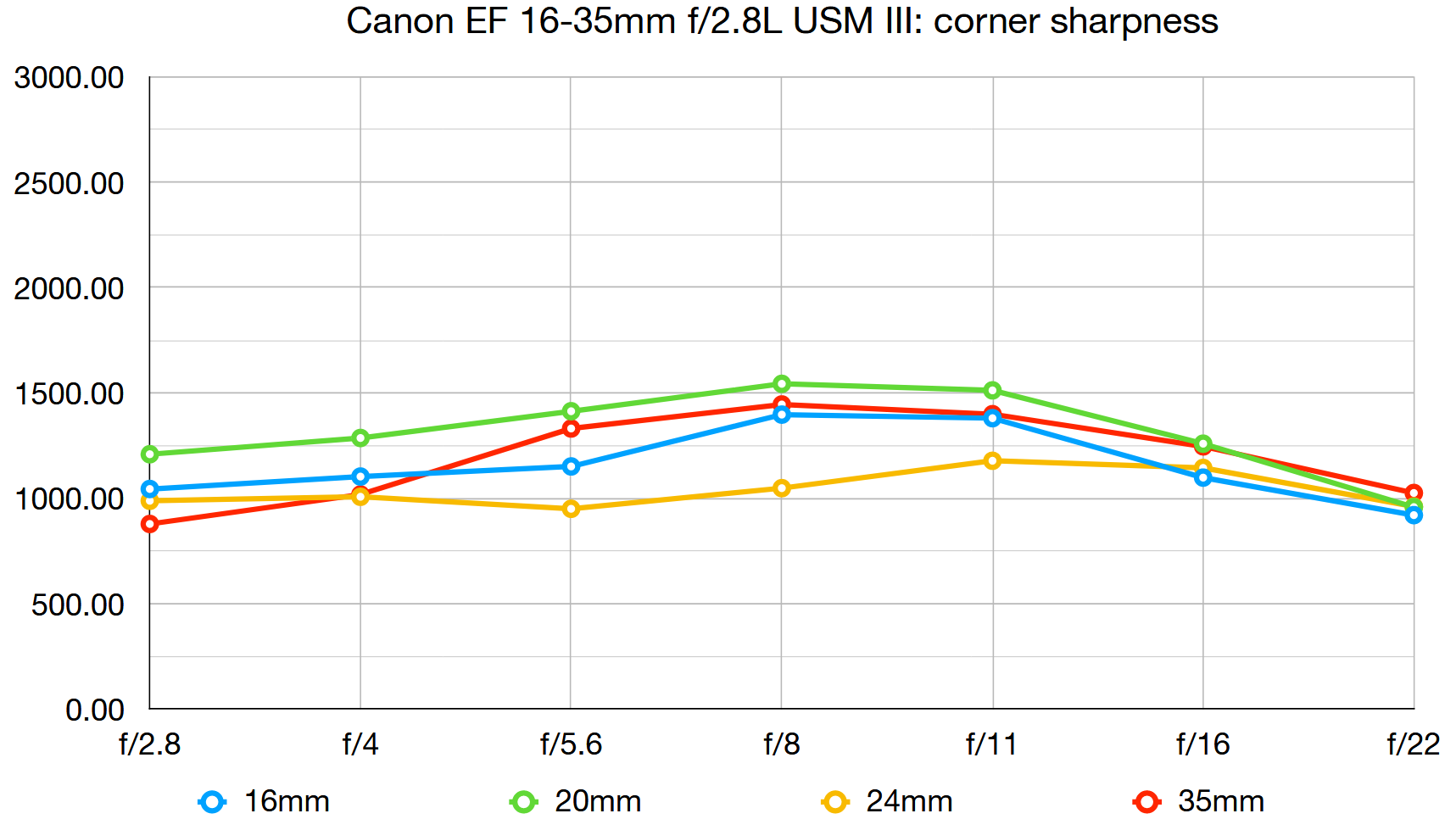
Centre-sharpness is impressive throughout the zoom range but, while corner-sharpness is considerably improved compared with previous editions of the lens, it still lags behind that of the competing Sigma 14-24mm Art.
Fringing:
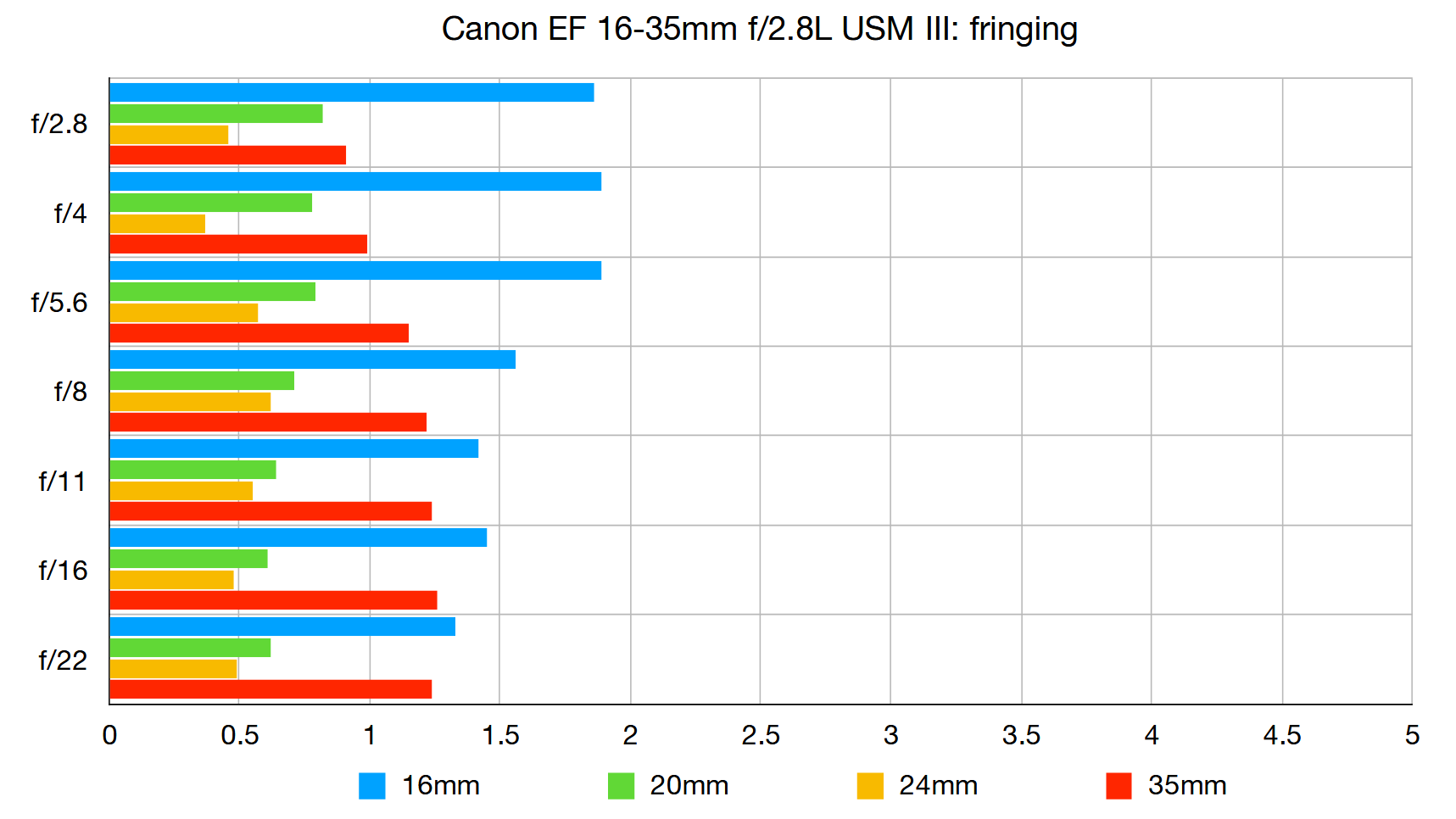
There’s only minimal color fringing at both ends of the zoom range and it’s fringing is very negligible in the mid-zoom sector.
Distortion:
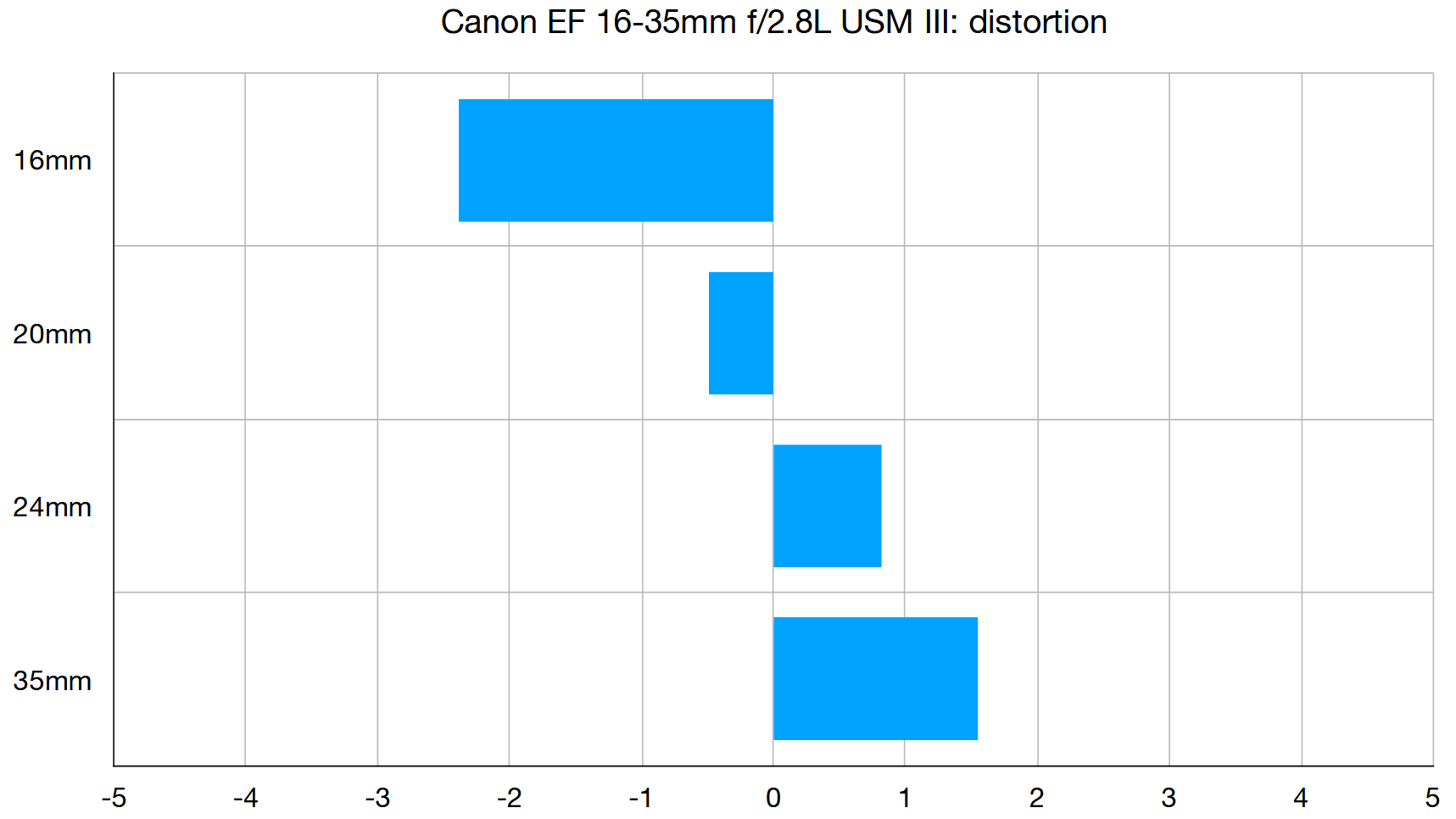
There’s a noticeable swing from barrel to pincushion distortion as you extend through the zoom range but levels are reasonably minimal throughout.
Verdict
Canon’s third edition of this lens is a marked improvement over earlier versions but doesn’t give the bang per buck of the competing Sigma 14-24mm f/2.8 DG HSM Art and lacks the optical stabilization of the Tamron SP 15-30mm f/2.8 Di VC USD G2, which are much less expensive to buy. Even so, it’s an essential purchase for those who want a genuine ‘own-brand’ Canon set of trinity zooms.
Read more:
Matthew Richards is a photographer and journalist who has spent years using and reviewing all manner of photo gear. He is Digital Camera World's principal lens reviewer – and has tested more primes and zooms than most people have had hot dinners!
His expertise with equipment doesn’t end there, though. He is also an encyclopedia when it comes to all manner of cameras, camera holsters and bags, flashguns, tripods and heads, printers, papers and inks, and just about anything imaging-related.
In an earlier life he was a broadcast engineer at the BBC, as well as a former editor of PC Guide.



